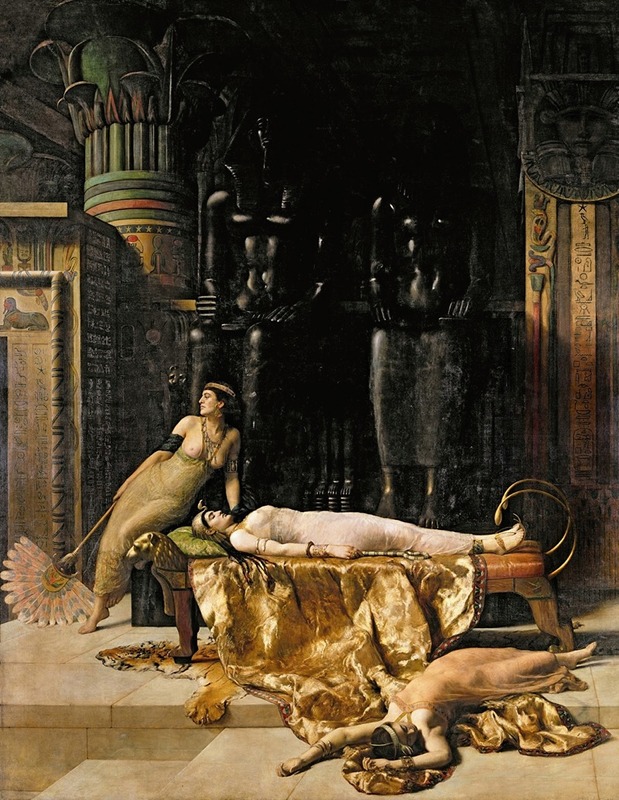
The Death of Cleopatra
A hand-painted replica of John Collier’s masterpiece The Death of Cleopatra, meticulously crafted by professional artists to capture the true essence of the original. Each piece is created with museum-quality canvas and rare mineral pigments, carefully painted by experienced artists with delicate brushstrokes and rich, layered colors to perfectly recreate the texture of the original artwork. Unlike machine-printed reproductions, this hand-painted version brings the painting to life, infused with the artist’s emotions and skill in every stroke. Whether for personal collection or home decoration, it instantly elevates the artistic atmosphere of any space.
"The Death of Cleopatra" is a painting by the British artist John Collier, completed in 1890. John Collier was a prominent painter in the late 19th and early 20th centuries, known for his portraits and historical scenes. He was part of the Pre-Raphaelite movement, which sought to return to the detail, intense colors, and complex compositions of pre-Renaissance art.
This painting depicts the dramatic moment of Cleopatra's death, a subject that has fascinated artists and historians for centuries. Cleopatra VII was the last active ruler of the Ptolemaic Kingdom of Egypt. Her life and reign have been the subject of many works of art, literature, and film, often focusing on her relationships with Roman leaders Julius Caesar and Mark Antony, as well as her tragic demise.
In Collier's painting, Cleopatra is shown in a serene and composed state, lying on a luxurious bed, moments after her death. The setting is opulent, reflecting her status as a queen. The room is richly decorated, with intricate patterns and luxurious fabrics, emphasizing the wealth and power she held during her lifetime. Cleopatra herself is depicted wearing a white gown, with her dark hair cascading around her shoulders. Her expression is peaceful, suggesting a dignified acceptance of her fate.
One of the most striking elements of the painting is the presence of the asp, the venomous snake that, according to popular legend, Cleopatra used to commit suicide. The asp is depicted near her arm, symbolizing the cause of her death. This method of suicide was chosen by Cleopatra, according to historical accounts, to avoid the humiliation of being paraded as a captive in a Roman triumph.
Collier's portrayal of Cleopatra's death is notable for its focus on her calm and regal demeanor, rather than the violence or agony of the act. This reflects a Victorian sensibility, emphasizing the nobility and tragic romance of her story. The painting captures the moment with a sense of stillness and finality, inviting viewers to reflect on the themes of power, beauty, and mortality.
"The Death of Cleopatra" is housed in the collection of the Guildhall Art Gallery in London. It remains a significant example of late 19th-century British art, illustrating the enduring fascination with Cleopatra as a historical and cultural figure. Collier's work contributes to the rich tapestry of artistic interpretations of Cleopatra's life and legacy, highlighting the blend of historical narrative and artistic imagination that characterizes much of the art from this period.







![Dendera [Dandara]. Dec. 1838.](/imgs/217474/s/david-roberts-dendera-dandara-dec-1838-6eb01a73.jpg)










